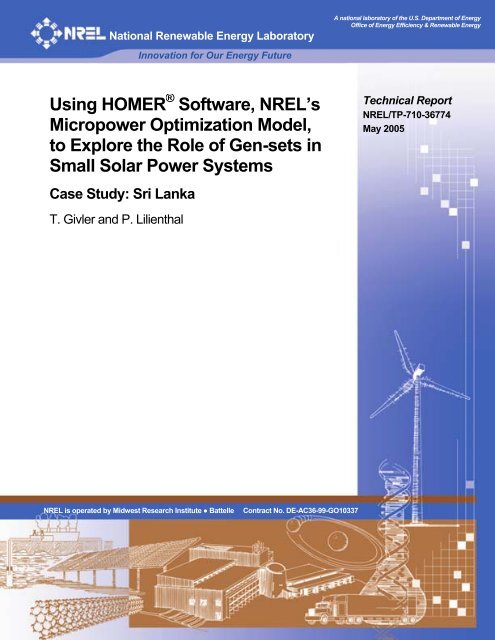

(2018) Influence of Temperature on Electrical Characteristics of Different Photovoltaic Module Technologies. Renewable and Sustainable Energy Reviews, 90, 402-411. (2018) Microgrids: A review of technologies, key drivers, and outstanding issues. Energy Conversion and Management, 144, 322-339. (2017) Performance analysis of hybrid PV/diesel/battery system using HOMER: A case study Sabah, Malaysia.

(2018) Optimal design and analysis of grid-connected photovoltaic under different tracking systems using HOMER. European Conference on Renewable Energy Systems (ECRES 2018). (2018) Design and analysis of a hybrid microgrid system using HOMER software: Eskisehir Osmangazi University example. 1st National Electrical Energy Conversion Congress (EL-EN 2017), 251-256 (2017) Optimal Management of Energy in an AC Microgrid Designed for Eskişehir Osmangazi University Campus. 9th Renewable Energy Resources Symposium and Exhibition (YEKSEM 2017), 152-158 (2017) Microgrid topologies and evaluation of Turkey's renewable energy potential in terms of microgrids. Sustainable Cities and Society, 39, 252-261. (2018) Multi agent system solution to microgrid implementation. Journal of Renewable Energy Development, 8(1), 65-79. (2019) Design, Analysis, and Optimization of a Hybrid Microgrid System Using HOMER Software: Eskişehir Osmangazi University Example.
HOMER ENERGY HOW TO
How to Cite This Article: Çetinbaş, I., Tamyürek, B., and Demirtaş, M.

In conclusion, it was demonstrated that the proposed hybrid microgrid system supplies the energy demand of the hospital, lowers the cost of electricity consumption, provides a reasonable payback time, and the best of all, it contributes to the clean campus concept.Īrticle History: Received May 16 th 2018 Received in revised form October 18 th 2018 Accepted December 16 th 2018 Available online The simulation results were then used to optimize the design of the microgrid system for the best overall performance. Moreover, the results show a reduction up to 33.30% in the portion of energy that is directly transferred from renewable sources to the load. For example, in a worst case scenario where all variables are acting together, net present cost increases to 40.44%, cost of energy increases to 21.92%, and operating cost rises to 53.91%. Simulation results have shown that the economic feasibility and the performance of the microgrid are greatly affected by these factors. The objective was to obtain reliable data from the microgrid design that reflects the realistic operation of microgrid over its 25-years of service time.

Later, both the individual and the combined effects of these variables on the performance of the microgrid was investigated via simulation using five operating scenarios. In order to optimize the system, PV module failures, increase in demand, increase in fuel cost of diesel generators, and mains interruptions are defined as performance variables and realistically modelled in the HOMER simulation. The designed microgrid consisting of photovoltaic (PV) modules, diesel generators, batteries, converters, and loads is configured as a grid-connected hybrid system. The optimization takes into account the overall performance and the economic feasibility of the microgrid system over its lifetime. Solar energy potential of the campus and the real electricity consumption of the hospital collected over one-year period were used in the design of the microgrid. This study presents design, performance analysis, and optimization of a hybrid microgrid for the hospital complex located on Eskişehir Osmangazi University (ESOGU) campus using Hybrid Optimization of Multiple Energy Resources (HOMER) software.


 0 kommentar(er)
0 kommentar(er)
